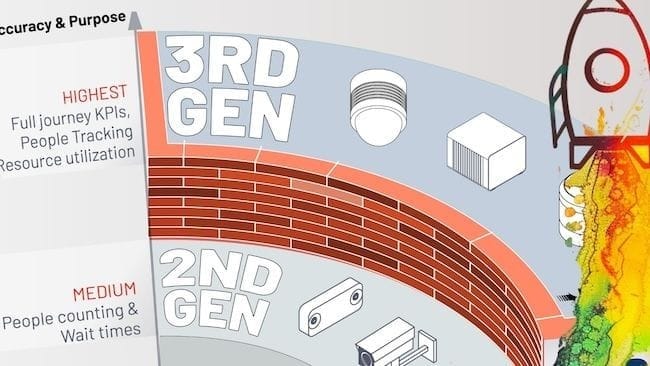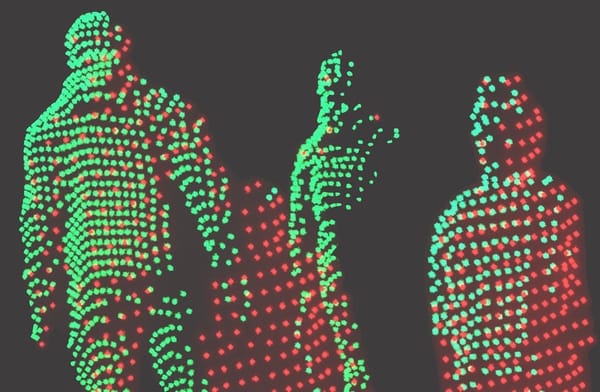
How can LiDAR improve passenger's experience in Airports
According to the New York Times, the cumulative wait time in airport queues is 37 billion hours. LiDAR Software can help.
Among other actions, they need to rethink their facilities to optimize the passenger experience within their infrastructure.
LiDAR technology, used with the right software, can unlock a whole new approach to passenger flow management by providing differentiated solutions to traditional imaging technologies.

Dynamic Queue Management
As of today, the most commonly deployed technologies to study the flow of people within terminals are often limited to cameras or wireless (Wifi/Bluetooth) measurements.
Unfortunately, the data generated by this type of sensor does not allow for a precise and dynamic analysis of the evolution of unstructured queues which, by definition, are unpredictable.

Coupled with spatial perception software like Outsight's, a LiDAR installation gives you access to real-time 3D LiDAR data to analyze the evolution of passenger traffic within defined areas.
Our software includes an overflow management module that indicates the actions to be taken - such as opening a new ticket office - in order to respond dynamically to traffic fluctuations such as overcrowding.
Discover how LiDAR is transforming airport right here :

Passenger flow analysis
In order to optimize passenger flows within airports, you must first understand them.
And this understanding requires not only being able to analyze the journey of thousands of passengers simultaneously and continuously, from their entry into the airport perimeter (station, parking lot, drop-off point, etc.) to their boarding of the plane, but also to understand at each stage of this journey what the friction points are that need to be resolved.
Initially designed for the autonomous vehicle market, LiDAR technology has an excellent capacity to identify and differentiate between multiple objects simultaneously.
With the right software solutions, you can not only track large groups of passengers throughout their journey through the airport, but also cross-reference the generated data with other identification technologies (such as ticket scanners) to be able to track a specific individual's actions in a non-intrusive way.
The advantage of such technology is that with the right software, you can take real-time measures to optimize the flow of your passengers (opening of counters, detection of breakdowns, detour following an incident, etc.), but also study the stored data in order to identify certain trends that impact the operational efficiency of your various resources.
Passenger flow analysis spikes your interest? Read this article :

Improving service delivery
Beyond terminal automation process, Airports operation and the passengers experience rely on service delivery where the presence of technicians is often necessary to ensure the comfort and safety of passengers.
In case of variation or anomaly detection, operators are alerted in real time and can take the necessary measures, such as dispatching a maintenance team to clean certain facilities, notifying a technician to check the functioning of an automatic kiosk or identifying a lost/immobilised baggage and alerting a security team.
The data collected can then be analyzed to determine the relevance of these services, and to precisely adapt their implementation within the infrastructure, thus guaranteeing optimal operational management.
Optimizing resource deployment
During their journey through a terminal, passengers will use the resources and assets provided by the airport, such as seats or luggage trolleys.
This can include adding or removing furniture, placing trolleys where they are most likely to be used, or installing automatic kiosks to ensure a relevant and quality passenger experience at every stage of the journey.
You're keen on learning the applications of LiDAR software in Airports? Read this article :

Whatever the level of maturity of a LiDAR installation project, we do our utmost to facilitate the democratization of this technology in order to accurately respond to the problems of airport flow analysis, and thus enable them to optimize the passenger experience.
The first step of any project being planning what type of hardware to use and its precise setup, we built the very first multi-vendor LiDAR installation simulator that allows to select the type and number of sensors adapted to each project.
Thanks to Outsight's LiDAR-based 3D perception solution you can now unlock the full potential of LiDAR technology.
Discover how LiDAR can improve passenger's experience in Airports by reading our latest whitepaper:









